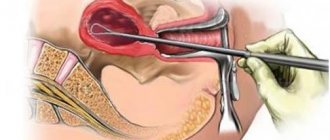One of the most popular diagnostic methods today is sonography, otherwise known as ultrasound. The prerogative aspects of this diagnosis are:
- non-interference with internal organs (non-invasive);
- absence of mechanical damage to the skin;
- painless for the patient;
- safety (radiation does not harm the body).
Only the attending physician can determine how often an ultrasound can be done. This depends on the symptoms, laboratory test results, and the general condition of the patient. Ultrasonic waves and the thermal effect of the sensor do not have a negative effect on internal organs and do not cause structural changes in them.
Sonography is done in the following cases:
- detection of pathologies (diagnosis);
- determination of the etiology of the disease;
- monitoring the results of therapy;
- prevention of complicated course of the disease;
- pregnancy management and fetal sex determination.
The procedure requires simple preparation and does not cause unpleasant physical sensations or psychological discomfort. The main advantage of ultrasound is the speed of detection of abnormal phenomena in organs and systems. The doctor assesses the condition of the organs during the examination, that is, online. The data is projected onto a monitor and can be recorded on digital media or printed.
The time range of the procedure depends on the organ being examined. The objectivity of diagnosis depends on how high the professional level of the medical specialist is and how well the equipment is working. Decoding of ultrasound data is carried out by comparing them with standard indicators. Despite the safety of the study, it should not be abused.
Frequency of ultrasound examination of individual organs
The main areas of the body that are examined using ultrasound include:
- heart;
- pelvic organs (male and female reproductive system);
- hepatobiliary system (liver, bile ducts and gallbladder);
- thyroid and mammary glands;
- organs of the abdominal cavity and retroperitoneal space (spleen, kidneys, pancreas, urinary system, intestines).
A separate procedure is ultrasonic facial cleansing. Ultrasound of the heart, otherwise echocardiography, helps diagnose dropsy of the pericardial muscle (hydropericardium), thinning (aneurysm) or thickening (hypertrophy) of the walls of the organ, congenital and acquired defects, thrombosis, and disruptions in the circulatory system.
A check of the pelvic organs in men is done to assess the condition of the prostate (diagnosis of prostatitis, adenoma, neoplasms). In women, this procedure helps to identify abnormalities in the ovaries and uterus and determine the presence of pregnancy in the early stages. When examining the hepatobiliary system, it is possible to identify functional disorders of the gallbladder and its ducts, cirrhosis, hepatitis of various etiologies, cancer and cystic neoplasms.
Breast ultrasound is recommended for women aged 20 to 40 years to detect possible tumors. Mammography is used for women 40 years of age and older. The thyroid gland is examined if endocrine disorders are suspected, in order to determine the size of the organ, identify tumor formations, nodules and cysts of the thyroid gland.
If you experience discomfort in the lower abdomen, it is recommended to perform an ultrasound of the genitourinary system to diagnose inflammatory processes and the presence of stones. Kidney ultrasound is performed to determine kidney stones, abscesses and tumors, and the location of organs relative to each other. Also for hypertension, pain symptoms and abnormal laboratory values.
When examining the spleen, the size of the organ, its structure, and the presence of abscess or cystic changes are assessed. In addition, the doctor performing the ultrasound identifies infectious lesions (typhoid, sepsis, tuberculosis). The digestive organs (intestines and stomach) are examined for the presence of inflammatory processes. At the same time, data from intestinal examinations are always more objective. For a complete picture of gastric diseases, ultrasound must be supplemented with an FGDS procedure.
How harmful is it to do an ultrasound during pregnancy?
Ultrasound examination is a relatively safe way to monitor the condition of the internal cavity of the uterus and embryo. However, if you visit the doctor's office every month, this will be an unnecessary impact on the embryo. Often you can do an ultrasound during pregnancy only if deviations from the norm in the fetus were detected during the first screening. In addition, an abundance of tests will prevent a specialist from making an accurate diagnosis.
Tatyana Malysheva and Petr Garyaev prepared a video about the dangers of ultrasound for the fetus.
How does ultrasound affect the baby?
It is not recommended to perform an ultrasound in the early stages - up to 11-12 weeks, as high-frequency waves can negatively affect the embryo. During the later period of fetal development, when it becomes larger, no obvious harm is caused to it during ultrasound examination. However, the baby feels some discomfort and reacts to the influence of high-frequency waves with movements of the head and body.
The Ja A channel has prepared a video about the effect of ultrasound on the fetus.
Frequency of ultrasound examinations in pregnant women
The use of ultrasound in perinatal (prenatal) diagnostics is not dangerous for expectant mothers, and harmless for the pregnant child. Since the method is non-invasive, it is used during pregnancy throughout the entire period. Ultrasound evaluates genetic abnormalities in the development of the child, malnutrition (underdevelopment), incorrect presentation of the fetus and placenta, placental insufficiency, and the amount of amniotic fluid. And also the risk of spontaneous abortion, which is especially high in the first trimester.
The question of how many times an ultrasound can be done during pregnancy is decided by the doctor who monitors the entire pregnancy. Performing the procedure three times is considered optimal. The time ranges for how long an ultrasound should be performed range from 8 to 12 weeks, depending on the woman’s health. You can read more about why pregnant women need to undergo an ultrasound procedure several times in this article.
The question often arises: is it possible to undergo the procedure in old age? Yes, you can. The examination is indicated for people of any age category. Sonography is a highly informative research technique with virtually no contraindications. Ultrasound cannot be done only in case of damage to the skin in the area of the organs being examined. According to numerous medical data, everyone who did an ultrasound noted only the positive aspects of the study. There are no negative reviews about the procedure.
I am 49 years old, gender Female. In March 2020 Due to caring for my elderly mother who was hospitalized, she lost a lot of weight. At the moment I eat normally (I follow the diet for gastritis patients as before), but the weight is restored very slowly.
At the end of June 2020 underwent an ultrasound of the abdominal cavity. Results: Liver: PD 118, LD 70, even, clear contours, the structure of the parenchyma is heterogeneous and diffuse, the echogenicity of the parenchyma is increased, the vascular pattern of the parenchyma is preserved, the portal vein is 9 mm, the intrahepatic bile ducts are not diffuse. Volumetric formations were identified in the amount of 1, dimensions 10x8.3 mm. Anechoic cyst with enhanced ultrasound.
Gallbladder: Bend in the funnel, the wall is not thickened to 2 mm, the contours are smooth and clear, no stones are identified, no formations are identified.
Pancreas: Dimensions: head 13 mm, body 6 mm, tail 19 mm, contours are clear, even, the structure of the parenchyma is heterogeneous and diffuse, the echogenicity of the parenchyma is increased, the pancreatic duct: not diffuse, not dilated. No mass formations were identified.
Spleen: typical location, dimensions 74x23 mm, clear, smooth contours, homogeneous parenchyma structure, echogenicity of the parenchyma coincides with the renal cortex, no space-occupying lesions were detected. Retroperitoneal, iliac nodes are not visible.
Conclusion: UZpr. cysts of the right lobe of the liver. Diffuse changes in the liver, pancreas
The ultrasound diagnostician recommended that I do a repeat ultrasound within 1 month. She justified this as a deadline. The therapist at the place of residence said that it was too early, an ultrasound should be done within 3 months, because... 1 month is not informative, but after 3 months such a small cyst can resolve.
Question: After what period of time do I need to repeat the ultrasound?
Thank you in advance for your response.
On Wednesdays, Vladimir Ivanovich is on duty. Questions will be answered with a delay of 2-3 days.
More than 1.2 million people die from cardiovascular diseases in Russia, despite the high level of cardiology in the country. Timely diagnosis of heart disease allows you to prevent irreversible consequences and thereby significantly prolong your life. One of the accessible and highly effective diagnostic methods, in addition to ECG, is cardiac ultrasound.
What effect does ultrasound examination have on pregnancy?
Ultrasound is used in many fields of activity: for treatment (physical therapy), cleaning tooth enamel, on military submarines, etc., so it is not surprising that pregnant women are afraid to perform this procedure on their unborn child. However, ultrasound does not have a negative effect on the body because it emits a minimal dosage of ultrasound.
Nevertheless, ultrasound creates a slight impact on the natural course of pregnancy since the uterus is the most sensitive organ of the female body. During pregnancy without abnormalities, she reacts poorly to external examination, and if there is a threat of miscarriage, she becomes toned and can harm the fetus. In such a situation, you can delay performing an ultrasound examination and wait until the uterus returns to normal.
How is a heart ultrasound done and what do the results show?
The ultrasound procedure of the heart, which shows the condition of this most important organ, lasts only twenty minutes. To conduct the examination, the patient must undress from top to waist and lie on his back, after which the sonologist applies gel to the chest and examines the organ, passing over the heart area several times. If necessary, the doctor may ask the patient to lie on his side.
Another research method is transesophageal echocardiography, which can hardly be called a pleasant process: a special scanner is inserted into the esophagus, which examines the organ almost from the inside. This type of study gives more reliable results, therefore it is prescribed if deciphering the results of cardiac ultrasound during a standard procedure is difficult.
Indications for use
The aorta is the largest artery that begins from the left ventricle of the heart, therefore, with ultrasound of the heart, which shows the condition of the aorta, diseases such as atherosclerosis and aortic aneurysm, as well as its dissection and occlusion, can be monitored. Since ultrasound of the heart can be performed frequently in an adult, this is one of the most accessible research methods.
Hypertension affects the condition of all blood vessels, so periodic studies with interpretation of ultrasound of the heart are necessary for the doctor to adjust treatment, depending on the patient’s condition. Common consequences of hypertension are coronary heart disease, myocardial infarction, aortic aneurysm, etc.
Ultrasound of the heart shows what is happening to the myocardium as well. The procedure is carried out in a standard manner. Interpretation of the results of cardiac ultrasound during myocardial infarction allows us to identify the focus and degree of myocardial necrosis, as well as its contractility. Also, ultrasound of the heart reveals a pre-infarction state, thereby preventing an attack.
Coronary heart disease (CHD) is one of the most formidable and serious, and therefore its many symptoms cannot be detected except by ultrasound of the heart. This is the fastest and most effective way. The most effective method to determine IHD is a stress test, as a result of which numerous symptoms of the disease appear.
When is an ultrasound required?
Considering that the procedure uses high-frequency waves, mothers are wondering how often they can do an ultrasound during pregnancy, how many times can the study be performed and why is it needed?
Often this procedure allows for the timely detection of pathology in the baby, which can lead to the death of the expectant mother. The most dangerous of them is ectopic pregnancy. If it is diagnosed early, urgent measures need to be taken.
An ultrasound scan during pregnancy is an indispensable procedure that is officially approved by the Ministry of Health. It is absolutely painless and does not harm the health of mother and baby. The procedure is prescribed once every three months, but if complications arise along the way, an unscheduled study is required.
Carrying out 1 ultrasound.
Expectant parents are afraid of having their first ultrasound procedure. This is due to the fear of creating harmful conditions for the baby and losing the embryo, so they are concerned at what time the diagnosis should be performed.
The initial examination is done at 10 to 14 weeks. At this stage, doctors consider questions about the number of embryos, whether there is a threat of miscarriage, whether there are intrauterine pathologies, for example, Down syndrome, and establishes the exact date of conception and the approximate date of birth of the child.
Carrying out 2 ultrasounds.
Almost all expectant mothers wonder: after how long can a repeat ultrasound examination be performed? A secondary ultrasound is performed at the direction of the attending physician at the antenatal clinic, between 20 and 24 weeks.
At this stage, the diagnostician evaluates development, compares equipment indicators with established standards and gestation periods, examines the functionality of the internal organs of the unborn child, and identifies violations, if any. They also tell young parents the gender of the baby.
Carrying out 3 ultrasounds.
The third ultrasound examination is a planned and final examination. Its implementation is intended for the last trimester, after 32 weeks of pregnancy. It allows honey. staff to prepare for childbirth and determine the position, make sure there are no intrauterine growth retardations or take measures to eliminate them, find out whether the child has congenital defects.
If complications arise in carrying a baby in the first 2 trimesters associated with pathological diseases: deformity, Down's disease, severe anomalies, then the doctor will suggest an abortion.
If congenital defects are detected on the last ultrasound, for example: heart, pancreas, liver, etc., the pregnancy cannot be terminated.
How to prepare properly?
With transthoracic ultrasound of the heart, preparation for the study is not required. In this case, it is better to quit smoking two hours before the ultrasound, alcohol, caffeine-containing drinks, and medications on the day of the examination.
However, it is worth knowing how to prepare for a cardiac ultrasound using the transesophageal technique: you must refuse to eat 2-3 hours before the procedure. Many young mothers are concerned about whether babies can eat before a heart ultrasound. Doctors recommend skipping one feeding before the ultrasound.
If there are diagnosed diseases, the attending physician gives recommendations to the sonologist on the procedure. Otherwise, preparation for cardiac ultrasound in women, men and children over 1 year of age is no different.
Three myths about diagnosis
Various myths arise around the ultrasound procedure, due to its lack of knowledge, generated by opponents of this research method.
The main ones claim that ultrasound diagnostics:
- leads to disturbances in fetal development;
- causes mutations at the gene level;
- meaningless in the normal course of pregnancy.
Myth one: Ultrasound affects the perinatal development of the fetus
There is a theory that ultrasound diagnostics affects the future growth of the embryo and can lead to retardation in physical as well as intellectual development.
Doctors did not identify any relationships between pathologies and ultrasound. In addition, all children who took part in this study did not differ from their peers on basic parameters.
Myth two: Ultrasound is the cause of gene mutations
The work of the author P. P. Garyaev “Wave Genome” proposes a theory that ultrasound changes the child’s DNA, which subsequently leads to gene mutations. However, this version has not been proven by facts and has no followers in wide medical circles.
Myth three: during a normal pregnancy, ultrasound does not make sense
The opinion about the inappropriateness of ultrasound during a normal pregnancy is unfounded. Many problems in fetal development cannot be detected by visual examination of a woman. With normal external indicators, pathology may begin to develop. Ultrasound examination often helps to save the fetus and the woman in the event of a problematic or ectopic pregnancy.
In the early stages, without ultrasound, it is impossible to determine whether the child is developing correctly or whether the condition of the mother’s reproductive organs is normal.
How is cardiac ultrasound performed?
Like preparation for the study, the results shown by ultrasound of the heart depend on the type of technique. There are also technical parameters of ultrasound that expand diagnostic capabilities.
One-dimensional echocardiography shows the heart in one plane in real time. Interpretation of the results of a one-dimensional ultrasound of the heart will show the size of the chambers and the lumen of the heart valves.
This research method allows you to examine the heart in two planes to see the areas of the valve openings and the lumens of the great vessels.
This type of study is also called Doppler. Three-dimensional ultrasound of the heart, which simultaneously shows the movement of blood flow and the anatomy of the organ, is the most advanced method of ultrasound diagnostics.
Is ultrasound safe during pregnancy?
Ultrasound during pregnancy - good or evil?
Currently, probably, not a single pregnancy is complete without a series of diagnostic studies. And the most common among them is ultrasound. It must be said that this phenomenon is quite new: about 15 years ago in Russia, so-called pregnancy screenings, which include ultrasound, were not legally regulated. And like any innovation, ultrasound examination of the fetus still causes wide controversy - from the absolute harm of the procedure to the obvious abuse of this type of diagnosis.
A pregnant woman has a choice: which opinion to subscribe to and how often she should do an ultrasound during pregnancy. The truth must be hidden in the middle between extreme points of view...
Interpretation of ultrasound of the heart
A full interpretation of the results of a cardiac ultrasound is carried out by the attending cardiologist, however, a sonologist can also provide preliminary information about the condition of the organ during or after the study.
Interpretation of cardiac ultrasound takes into account the normal indicators obtained by world medicine: the sizes of the ventricles and atria, the diameter of the aorta and signs of valve dysfunction. Many patients are interested in whether cardiac ultrasound shows arrhythmia. Arrhythmia, like coronary heart disease, is detected during a stress test. It should be taken into account that the norm for cardiac ultrasound in women differs from that in men.









